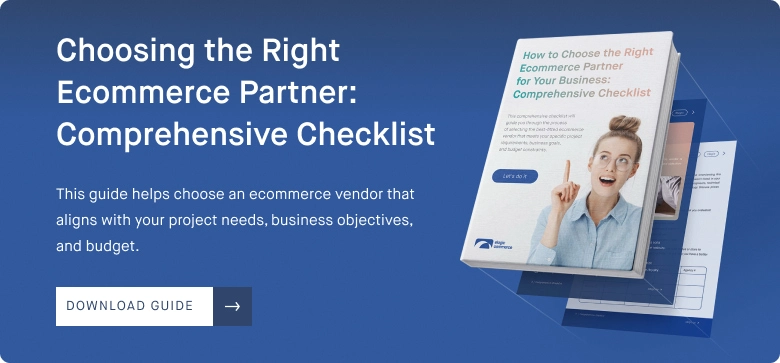Big journeys begin with small steps.
When the founder of a world-famous beauty brand Glossier, Emily Weiss, started blogging in 2010, she would have never thought to turn her content into a $1.2 billion business. As more followers were flowing in, she has ventured to add ecommerce to website and is now named as a top beauty brand by Teen Vogue, Glamour, and Cosmopolitan, among others.
If you already own a website and plan to start selling online, this success story can become yours. Obviously, you’ll have to invest in an established ecommerce platform to scale later, but the plan to integrate ecommerce into existing website might be the first step to a longer entrepreneurial journey.
In this article, you’ll discover six ways to add ecommerce to your website — both complex and simple ones — and see a few effective solutions that will integrate shopping carts.
How to Add eCommerce to Your Website?
We’ll start with a spoiler: the ways to add ecommerce to your website aren’t numerous. Adding eCommerce works only for certain website owners and might require a certain degree of technical knowledge on how to organize the process correctly.
Here are some of the ways to add eCommerce to your website depending on the complexity of your platform, your business needs, and the available budget.
Integrate eCommerce Into Your Site Using Plugins
If you created your platform with a website builder like WordPress or Joomla, you probably know about plugins. They add various functionalities to your website, including web form builders, analytics, SEO meta tags, payment gateways, and shopping carts, among others.
If you’re a lucky owner of WordPress, Joomla, or Drupal websites, the most viable way for you to add ecommerce to website will be to install a plugin. Here’s the list of most popular plugins for you:
- WordPress → WooCommerce
- Joomla → Hikashop
- Drupal → Drupal Commerce
- Wix → Wix Stores app
The process of adding a plugin to your eCommerce platform is pretty straightforward. It does not require custom coding or much effort. Just go to the Plugins section, choose the one compatible with your website version, and click “Install”.
Is this option right for my website? This option is available only for websites built with website builders such as WordPress, Joomla, Tilda, etc. Plugins may not work on custom websites.
Tag on a Separate Standalone eCommerce to the Existing Site
You can build a different website exclusively for eCommerce and link to it on your existing platform. Mind that you should preserve the exact same design and user experience so that visitors can recognize your brand and rest assured that they have landed on a random unsecured website.
You can develop a separate website with a website builder like Selz or hire an eCommerce developer to create a website with your exact branding. Even though the latter option might be more expensive, you can be sure your standalone ecommerce website will replicate your existing design perfectly.
Is this option right for my website? This option is right for businesses who are willing to invest in the development of a standalone eCommerce platform and have access to needed technical expertise.
Add a Shopping Cart or a Payment Gateway
Solutions such as Snipcart allow you to add a shopping cart to any kind of website. Such payment gateways as Google Checkout, Sage, or PayPal can also be integrated into any platform. These basic eCommerce features would allow you to process payments from your visitors and your products.
Is this option right for my website? A shopping cart and a payment gateway is the right solution if you have only a few products and don’t need any advanced eCommerce features.
Connect to Marketplaces
About 62.7% of all global eCommerce sales in 2020 have taken place on 100 most popular marketplaces. Selling through such popular platforms as Amazon, eBay, Alibaba, Rakuten, etc. gives you access to a wider audience. In case you choose to sell through Facebook or Instagram marketplace, you can also benefit from promoting your product with influencers and social media ads.
Is this option right for my website? If you want to focus on selling on social media or test waters in eCommerce, connecting to a marketplace would be the right idea. However, it will not turn your website into an eCommerce business in the long run.
Add a Shopify Button to Your Website
Shopify has a Buy Button that you can add to any website, custom or not. It shows users product pictures, descriptions, and prices and allows them to stay on your website while they are buying. You can customize the button to make it feel like a part of your website.
The solution costs just $9 per month and requires little effort to integrate eCommerce into existing website. Shopify provides a detailed guide on how to add a buy button to your website. You will just have to copy the pre-written code and embed it into your pages.
Is this option right for my website? It works for any website and offers a pretty wide range of functionality.
Give Your Website an Ecommerce-Like Look & Feel
Adding ecommerce to your website is not only about technology. In every case, you will have to contribute as well by integrating:
- Social sharing icons
- Product pictures
- Product description
- Tags and meta info
About 94% of consumers pay particular attention to the design of the website and continue browsing only if the UX/UI is good. Thus, investing in modern design and easy-to-use navigation would pay off in the long run.
Top 6 Solutions to Add eCommerce to Any Website
Here are six popular eCommerce platforms that act as drag-and-drop website builders and help merchants develop an eCommerce part of the website with less investment of time and money.
SnipCart

SnipCart allows you to sell physical and digital products, as well as subscriptions. You can connect it with other solutions through APIs too to get more eCommerce features.
SnipCart alone will add the following functionality to your website:
- Shipping
- Inventory management
- Discounts
- Invoice generation
- Multi-currency payments
Selz

Selz gives you an opportunity to either create a store with an easy drag-and-drop interface of the chosen theme or add eCommerce to existing website. Extensive marketing functionality that includes the ability to add MailChimp is the main advantage of Selz.
With Selz, you will be able to:
- Add buy buttons and shopping carts
- Manage inventory
- Ship
- Analyze your performance
- Build your loyalty programs
Shoprocket

Shoprocket is code-free and allows you to embed eCommerce features in a regular website within less than 5 minutes. They have more than 120 payment gateways and offer a dashboard where you can manage all your eCommerce activities. The ability to quickly add eCommerce to your website is the main advantage of Shoprocket.
It can add the following features to your website:
- Shopping cart and payment gateways
- Easy product filtering and browsing
- Full customization to match your existing website
- Marketing features
- Inventory, custom, and order management
Ecwid

Ecwid is a totally free tool for small businesses that want to try eCommerce. It has extensive social media selling functionality which makes Ecwid stand out among other eCommerce solutions.
The solution allows businesses to:
- Add an online store to an existing website where AI matches the design of your website automatically
- Add SEO features and advertising from a single dashboard
- Manage inventory, payments, and shipping
RomanCart

RomanCart is a free solution that allows you to add eCommerce buttons to your existing website with a pre-written code. The main advantage of the solution is that it’s free and easy to use even for beginners.
The feature set includes:
- Shopping cart
- Payments via popular points of sales
- Stock management
- Email and affiliate marketing
FoxyCart

FoxyCart creates a cart and payment page for any website. The extensive functionality is the main advantage of this solution. You can add eCommerce features for any type of product: physical, digital, and custom products, donations, and subscriptions.
You will be able to add the following features:
- Shopping cart and payments (including multi-currency)
- Unified look with your existing website
- Custom checkout fields
- Transaction emails
- Multi-language shop
- Inventory and shipping management
Wrap Up
Now you know how to add eCommerce to existing website if you are just starting out or don’t plan to expand in the near future. However, it is unlikely to work for big eCommerce platforms or marketplaces because it lacks the ability to scale and be flexible.
If you do plan to go big, we recommend creating a standalone website and paying attention to custom ecommerce development or store builders like Magento, Shopify, and BigCommerce. They were designed to meet eCommerce business needs specifically and have numerous plugins and built-in features to facilitate your growth.
At Elogic, we specialize in end-to-end web development on a variety of ecommerce platforms — Shopify, BigCommerce, Magento, Salesforce, and commercetools.
Partner up with Elogic and transform yourself into an ecommerce leader!
See consulting services

